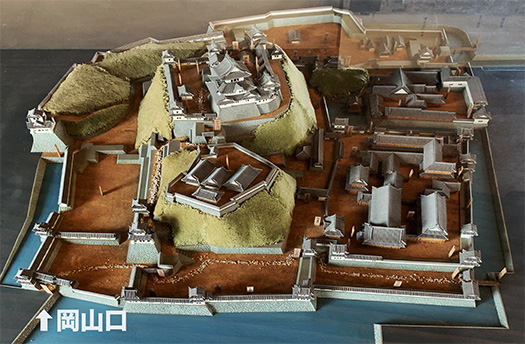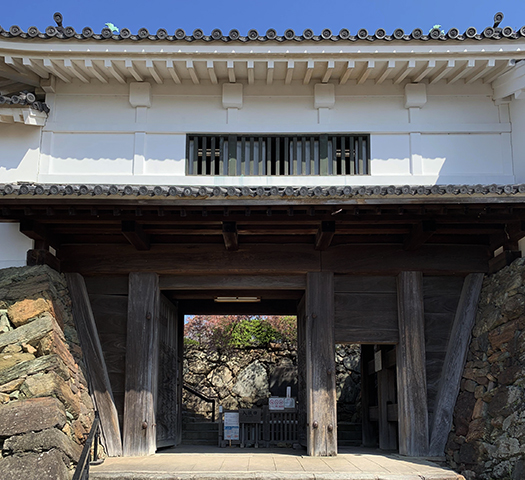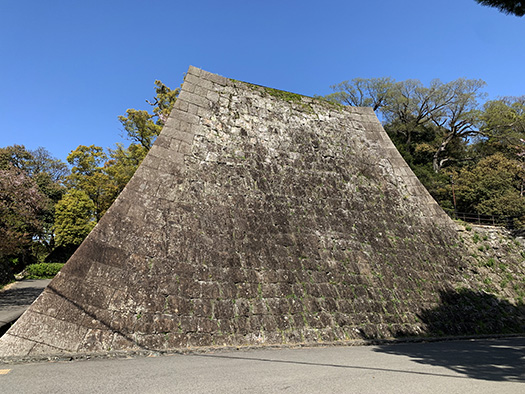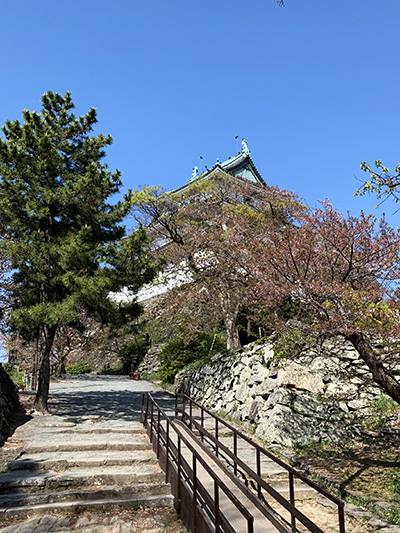


あんまり人気の無い戦国武将に藤堂高虎がいる。
関ヶ原をピークとする徳川家康の権力奪取時期にその先兵として
なにか腰巾着みたいな印象を持たれている人物。
その功あって江戸期を通じて有力大名として存続したけれど、
幕末に至って幕府の「しきたり」で先鋒を担い、
対薩長の武力紛争局面でみごとに無力をさらけ出して
「いかにも藤堂高虎の末裔だ」と蔑まれたというエピソードが語られた。
徳川キライの上方文化圏では不人気の人物とされる。
しかしいろいろと事跡を調べてみると面白い人物だとわかる。
戦国末期の武士のありようとしてある意味、象徴的人物かと。
和歌山という街にはこの人物の強い痕跡が残っている。
この和歌山城の基本設計、最初期のありようを造営した。
秀吉による雑賀衆すりつぶし後、その雑賀衆の根拠地であった「岡」と
相対する虎伏山に注目してそこに城を建設した。
城郭建築というのは建築の一分野ではあるけれど、わたしの通常フィールドの
住宅とはちょっと縁遠いかと思っていたのですが、
実際にこの城を探訪してみて、自然地形を活かしながら工夫している様子が伝わって
ちょっと気付くことが多かった次第です。
歴史の中の人物は「考える」という点ではほぼ現代人と同程度の知的レベル。
条件面をその時代の要素に還元して考えれば通底してくるものがある。
和歌山城は何回も改造が繰り返されてきているそうですが、
基本となる地形的要素はいわば「設計の戦略」部分を大きく規定している。
きのうも触れた「岡山口」という入口は重厚な防衛構造になっている。
そしてその入口を抜けると「高石垣」が壮大にそびえ立っていて
その頂部からはるかに下の攻城軍を狙撃するようになっている。
その一隅は「枡形」という四方からの狙撃攻撃可能な設計。
それを突破しても、きわめて急傾斜で「よじ登る」ような坂道。

その先に本丸城郭があってそこからも攻撃軍に「つるべ打ち」攻撃が可能。
こういった「基本設計」の考え方は明瞭に見て取ることができた。
そうした戦争目的が基本だけれど、より大きな立地としては
瀬戸内海交易にも参加し、大阪湾の南側の要衝地に当たっている。
太平洋側の「熊野水軍」という軍団名が残っているように
そういう勢力とも、瀬戸内海の水軍としても重要な拠点になる。
・・・こうした和歌山城の戦略的位置から藤堂高虎のことが気になって
作家・安部龍太郎の「下天を謀る」を読み進めております(笑)。
歴史事実を掘り起こしながら、想像力で空気感も復元してくる。
戦争のための道具であると同時に「城下町」という経済の中心地。
先人たちがいろいろに工夫した様子をタテ横ナナメと掘り返してみるのは
住宅を考えることとも連関する部分が大きいと実感しています。
English version⬇
The Architectural Field of Castles: Exploring Nara and Wakayama -25
The conception of the city as an economic center based on the military element. Comprehensive pursuit of town development and regional planning. Recalling the wisdom of our predecessors. The castle is an architectural field called “castle.
One not-so-popular warlord is Takatora Todo.
He was one of the first soldiers in Tokugawa Ieyasu’s power grab that peaked at Sekigahara.
He has the impression that he was a pawn in Tokugawa Ieyasu’s power grab at the peak of the Sekigahara War.
Thanks to his successes, he remained a powerful feudal lord throughout the Edo period.
However, at the end of the Edo period, he was the spearhead of the Shogunate’s “customary
He was a man of great strength and power, and his powerlessness was exposed in the armed conflict between Satsuma and Satsuma.
He was scorned as a descendant of Takatora Todo.
In the Kamigata culture, where the Tokugawa are considered to be unpopular, he is considered to be an unpopular figure.
However, when we look into his history, we find that he is an interesting person.
In a sense, he is symbolic of the way samurai warriors were at the end of the Warring States period.
The city of Wakayama still retains strong traces of this personage.
He designed the basic design of Wakayama Castle and built the castle as it was in the early days.
After Hideyoshi destroyed the Zoga Shu, he focused his attention on Oka, which was the base of the Zoga Shu, and Mt.
The castle was built on Mt. Torabuse, which was located on the same side of the mountain as the Zoga Shu’s base.
Castle architecture is a field of architecture, but I thought it was a little far from my usual field of
I had thought that castle architecture was a branch of architecture, but it was a bit far from my usual field of residential architecture.
However, when I actually visited this castle, I was able to see the ingenious ways in which the natural terrain was utilized.
I realized many things about the castle.
People in history are almost at the same intellectual level as people today in terms of “thinking.
If we reduce the conditions to the elements of the time period, we can find a common thread that runs through them.
Wakayama Castle has been remodeled many times.
The basic topographical elements largely determine the “design strategy,” so to speak.
The “Okayama-guchi” entrance, which was mentioned yesterday, is a heavily defended structure.
And once you pass through the entrance, the “high stone wall” rises magnificently.
From the top of the wall, the attackers can snipe at the castle.
One corner of it is “Masugata,” designed to allow sniping attacks from all sides.
Even if you break through it, it is an extremely steep slope that you have to “climb” up.
The main citadel was located at the end of the main castle, from which the attacking forces could “pick and peck” their way through the castle.
This “basic design” concept was clearly visible.
Although these war aims were basic, the larger location of the castle was also important.
The area was also involved in the Seto Inland Sea trade, and was located at a strategic point on the south side of Osaka Bay.
As the name “Kumano Suigun” still remains on the Pacific side, it is an important base for both these forces and for the navy of the Seto Inland Sea.
The strategic position of Wakayama Castle made me curious about Takatora Todo.
I have been reading “Geden wo kakiru” by Ryutaro Abe, a writer (laugh).
While digging up historical facts, he also restores the atmosphere with his imagination.
It is a tool for war and at the same time an economic center called “castle town.
It is also a tool for war, but at the same time, it is an economic center, a “castle town.
I feel that this is also related to the housing.
Posted on 5月 13th, 2022 by 三木 奎吾
Filed under: 住宅マーケティング, 日本社会・文化研究







コメントを投稿
「※誹謗中傷や、悪意のある書き込み、営利目的などのコメントを防ぐために、投稿された全てのコメントは一時的に保留されますのでご了承ください。」
You must be logged in to post a comment.